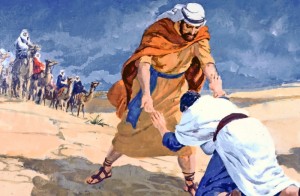 More Grandchildren! This week, we begin with big mazel-tov wishes to our friends Bonnie and Heshie Schertz upon the birth, just yesterday, of a baby girl to their children Yael and Michael Schertz. Mazel Tov to Yael’s parents, Jo D and PK Koenigsberg of Miami Beach, and a very special mazel tov to great bubby, Mrs. Gloria Schertz, and great grandparents Anita and David Miller of Montreal. Welcome to the world Rochel Yentka, Rae Schertz. Your face will soon be adorning many photo albums.
More Grandchildren! This week, we begin with big mazel-tov wishes to our friends Bonnie and Heshie Schertz upon the birth, just yesterday, of a baby girl to their children Yael and Michael Schertz. Mazel Tov to Yael’s parents, Jo D and PK Koenigsberg of Miami Beach, and a very special mazel tov to great bubby, Mrs. Gloria Schertz, and great grandparents Anita and David Miller of Montreal. Welcome to the world Rochel Yentka, Rae Schertz. Your face will soon be adorning many photo albums.
Mazel Tov to the Osivorfer and his eishes chayil on their upcoming 28th wedding anniversary this coming Sunday, the 29th of November.
Raboyseyee and Ladies:
Rashi and Sexual Activity:
Long before Masters and Johnson published their findings about human sexuality back in 1966, and long before Showtime began airing ‘Masters of Sex’, the stimulating show based on their work (and then some) with that Yiddishe co-star Lizzie Caplan, along came Rashi and in this week’s parsha of Vayishlach, citing the heylige Gemora, the medrish, and himself, will teach us all we need to know about the sexual needs of animals and humans. Are they different? Stay tuned! Rashi does what in this week’s parsha? You read that headline correctly, and soon enough we’ll cover that topic. And taka we should because in previous postings on this parsha, we covered all the major storylines. Shoin: Now that I have your attention, but before we get to the headline, let’s taka very briefly review some of what we covered in previous years.
In 2011, we wrote all about Dina who was nebech taken and raped -kidarko and sheloi- (so told us Rashi and of course and who knew better). In 2012, we asked and answered many questions about Reuvain; did he, or, did he not have sexual relations with that woman, his step-mother Bilah? The heylige Gemora and a number of medroshim decided it couldn’t be though the heylige Toirah used the word ‘Vayishkav’ (meaning always some form of sleep). They valiantly try convincing us that Vayishkav has another meaning. Ver veyst; maybe they just went to see a movie together!? In 2013, we took a closer look at Bilah and Zilpah, they, the unsung and hardly recognized mothers of 4 of 12 of our holy shevotim (tribes). We also wondered where they were buried and why they aren’t part of the team of our foremothers? Why don’t we have six foremothers? Were they but pilagshim (concubines) used as mere sex toys? But are we not taught that Yaakov married them as well? We are! Can one be both a pilegesh and wife at the same time? We were wondering why people (for the most part) do not name their children ‘Bilah’ and ‘Zilpa’. In 2014, we asked controversial questions about the location of kever Rochel (Rachel’s tombstone). It wasn’t until the Oisvorfer was over 50, that he heard for the first time that Rochel may not be buried where we had been taught to believe. Where the heck is she really buried? We wondered if there was more than one Beis Lechem (Bethlehem). Seemingly there is, maybe even a few. Grada this debate continues to rage.
Nu, here we are in Parshas Vayishlach and as advertised, the action picks up. Last week the heylige Toirah interrupted the feud between Yaakov and Eisav and dedicated kimat an entire parsha to Yaakov’s love life, his marriages to Leah, Rochel, Bilah, and Zilpa and to the birth of their children. As the parsha ended, Yaakov, was the father of 11 boys and one girl. Rochel was pregnant with child #12, and the entire mishpocho was on the road back to Israel. He had finally broken away from his shver (father-in-law) Lovon and was on his way to greener pastures and some well deserved tranquility. Or, so he thought. The RBSO had other plans.
This week, Yaakov is at least 99 years old and as we make our way through the parsha, we will come to learn that it’s not easy raising kinderlach. Things will begin unraveling in the Yaakov Ovenu household. The wheels on the bus become unglued with the Dina myseh, the violent response from Shimon and Levi, and the odd behavior of Reuvain -the first ever Jewish bed-mover- but will really spiral totally out of control next week when Yoisef will be sold into slavery by his own brothers. Ober chap nisht (keep your pants on); this week’s parsha has more than enough trauma. Like in most families, Yaakov is not having nachas (pride and joy) from all his kids at the same time. Grada it’s unusual that one does, and the Oisvorfer has long maintained that kids are like a stock portfolio; it’s rare that all of them are performing well at the same time.
Ober this year and new mamish for 2015, we will take a look at the storyline that occupies, 47 out of a total of 154 pisukim. We will discuss the preparation for, and the confrontation between Yaakov and his twin brother as they get set to meet for the first time in 34 years. In the end, the reunion, was mamish anti-climatic. Shoin, one kiss later and all was forgotten. Grada, many try this technique ad-hayoim-hazeh (until today) after a good fight at home. Nu, if the kiss doesn’t do the job, avada one can try make-up sex. There have been reports that this method can also be effective. Their parting of ways too, was nothing to write home about. And one taka has to wonder why the heylige Toirah dedicated so much rich text to this reunion? What are we to learn from these verses? Ober if the RBSO decided to include these details into His heylige Toirah, avada there must be a good reason; let’s see if we can find one or a few.
 Yaakov heard that Eisav was coming towards him with an army of 400, and that after as many as 34 years, he was still thinking revenge. Maybe the lentil soup he sold him caused massive diarrhea or an upset stomach, ver veyst. Or, efsher he thought that Yaakov was leading a charmed life over in Lovon’s house and was jealous thinking that Yitzchok’s brochis (blessings) had mamish kicked in. The bottom line: Yaakov was afraid mamish for his life and according to Rashi and others, was also worried that he might have to kill Eisav, something that would of course upset his mother Rivka who was taka worried (aloud) about losing both of them on the same day. What to do?
Yaakov heard that Eisav was coming towards him with an army of 400, and that after as many as 34 years, he was still thinking revenge. Maybe the lentil soup he sold him caused massive diarrhea or an upset stomach, ver veyst. Or, efsher he thought that Yaakov was leading a charmed life over in Lovon’s house and was jealous thinking that Yitzchok’s brochis (blessings) had mamish kicked in. The bottom line: Yaakov was afraid mamish for his life and according to Rashi and others, was also worried that he might have to kill Eisav, something that would of course upset his mother Rivka who was taka worried (aloud) about losing both of them on the same day. What to do?
Those that went through the yeshiva system know this story well and can retell it in their sleep. Yaakov hears that Eisav is coming towards him with an army of 400. Seemingly his memory of being duped out of the bechoira (birthright) is still fresh on his mind though decades have passed. Talk about holding a grudge. In any event, The heylige Toirah which does not – according to our Rabbis -contain any extra sentences, words or letters- will tell us in dramatic detail all about Yaakov’s preparations for the great confrontation. He was getting set to employ a trinary strategy. Avada you should read the parsha to chap every detail. Bikutzir (in short), Yaakov, not knowing what to expect, will prepare for the confrontation by; davening to the RBSO for help; with a plan to propitiate Eisav with a large gift (bribe); and, will also prepare for war. A number of the 54 pisukim are dedicated to the specific gift he selected and to the presentation of his family. We shall take a better look at this gift.
Did Yaakov order something big and expensive from the Neiman Marcus Holiday Catalogue? Not! A gift certificate efsher? Also not! Let’s recall that Yaakov, like other great Toirah personalities, was a shepherd. He was not a real estate magnate, nor a professional. What did he amass as a result of the successful plan he cleverly hatched to stimulate the animals using colored and spotted rods while they were at the watering holes? You forgot? Check out last week’s review at www.oisvorfer.com. What he amassed were animals; lots of them. He left Lovon’s house and Choron with many flock and decided to share his wealth with Eisav. In fact, to make the gift appear even larger than it was, his instructions included the words ‘vo’revach tosimu beyn eider lo’eider’ (leave open spaces between each grouping). So happens that Yaakov taka wanted for his gift to look larger that it was in real life. Mistama the first but zicher not the last time this ploy has been used, if you chap. Size matters! The heylige Toirah gives us specifics of the gift and lommer lernin innaveynig (let’s see the text at Bereishis 32:14-15). “He spent the night there, then he took from which had come in his hand, a tribute to Eisav his brother.” So far so good, one more verse. “Two hundred she-goats and twenty he goats; two hundred ewes and twenty rams; thirty nursing camel with their colts; forty cows and ten bulls; twenty she donkeys and ten he-donkeys.” Shoin, a bal-a-bat-e-she (generous) gift by any means especially in a vald (desert).
Efsher you’re wondering azoy? What made Yaakov decide to send 200 she goats and 20 he-goats; 200 ewes and 20 rams? Why that ratio of females to males? Why not one male for every female? Guess what? So was Rashi thinking and when something bothered him, he came up with an answer. Typically Rashi will tell us where he found his answer(s) and taka he does just that on this verse by referencing sources in the heylige Gemora (Kisuvois 61), and the medrish (Bereishis Rabbah).
And now Raboyseyee and fellow oisvorfs, lommer lernin (let’s learn) the Rashi you’ve all been waiting for. So as not to be accused of taking things out of context, or chas v’sholom (heaven forbid), promoting unnecessary sexual activity, we shall quote the Rashi in full (in English). It speaks for itself, does it ever!
 Says Rashi azoy: Two hundred she-goats require twenty he-goats. Similarly, with all of the species that composed Yaakov’s gift, the number of males was enough for the need of the females. That was a direct quote. It took 200 she’s to satisfy 20 he’s. More: “In Bereishis Rabbah it extrapolates from here with respect to the rate of marital relations expected of a husband mentioned as a commandment in the Torah. Those who stroll, everyday. The laborers, twice a week, the donkey drivers, once a week, the camel drivers, once every thirty days, the sailors, once every six months. I do not know how to align this midrash precisely with our verse, from which it is derived, but it appears to my eyes that we have learned from here that the rate of marital relations is not uniform for every man, but it is based according to the exertion which is placed upon him, i.e. which is required of him in his labor. For we find here that he gave to each he-goat, ten she-goats, and similarly, ten ewes to each ram. Since they, the males of the species, are idle from work, it is their nature to mate more often, and to impregnate ten females, and once a female animal has become pregnant, she does not accept a male. But as for bulls, which engage in labor, he gave to each male only for females; and to the donkey, which goes on distant journeys, two females per male, and to camels, which go on even more distant journeys, one female per male.” OMG! Are you kidding me? Is that what Rashi mamish said? I’ve been through this parsha a few dozen times in my life and I never chapped this Rashi? We extrapolate our Toirah commandment to satisfy our wives from the ratio of she- to he-goats? What are we to learn from the ratio of he- to she- goats and other animals? Are we to have something similar? What the hec is going on here?
Says Rashi azoy: Two hundred she-goats require twenty he-goats. Similarly, with all of the species that composed Yaakov’s gift, the number of males was enough for the need of the females. That was a direct quote. It took 200 she’s to satisfy 20 he’s. More: “In Bereishis Rabbah it extrapolates from here with respect to the rate of marital relations expected of a husband mentioned as a commandment in the Torah. Those who stroll, everyday. The laborers, twice a week, the donkey drivers, once a week, the camel drivers, once every thirty days, the sailors, once every six months. I do not know how to align this midrash precisely with our verse, from which it is derived, but it appears to my eyes that we have learned from here that the rate of marital relations is not uniform for every man, but it is based according to the exertion which is placed upon him, i.e. which is required of him in his labor. For we find here that he gave to each he-goat, ten she-goats, and similarly, ten ewes to each ram. Since they, the males of the species, are idle from work, it is their nature to mate more often, and to impregnate ten females, and once a female animal has become pregnant, she does not accept a male. But as for bulls, which engage in labor, he gave to each male only for females; and to the donkey, which goes on distant journeys, two females per male, and to camels, which go on even more distant journeys, one female per male.” OMG! Are you kidding me? Is that what Rashi mamish said? I’ve been through this parsha a few dozen times in my life and I never chapped this Rashi? We extrapolate our Toirah commandment to satisfy our wives from the ratio of she- to he-goats? What are we to learn from the ratio of he- to she- goats and other animals? Are we to have something similar? What the hec is going on here?
 What was bothering Rashi and what did Rashi himself efsher chap from this medrish? Lommer lernin (let’s learn): The medrish is trying to compare humans to animals and tells us that just like she-goats and ewes have needs -in a 20 to 200 ratio- because they, the females, require servicing (a lot), so too when it comes to humans. Pshat seemingly is azoy: The heylige Toirah teaches us that men have an obligation to service, to deliver the goods at home -to our wives of course- ober it does not tell us how often. Along comes the medrish and provides the details. How often one must deliver at home, depends solely on his physical exertion during the day. Ober Rashi was bothered by this comparison because when it comes to behamis or behaving like one, if you chap, it taka requires 200 females to satisfy 20 males, ober…when it comes to humans, we are supposed to have but one partner. It appears that Rashi was not tzifriddin (satisfied) with the medrish, because taka when it comes to behaymis, they can have multiple partners, over, we are limited to but one. And that being the case, how can we learn from Yaakov’s gift how many times we are obligated to service the wife’s needs? Taka? Ober Rashi will tell us azoy. It’s taka emes that we are obligated min-Hatoirah (biblically) to satisfy our wives, ober, such service and its frequency depends solely on how tired or spent the male is after a full day’s activities, if you chap. On the other hand, should you or your eishes chayil taka have instincts that resemble behaymis, efsher increased service calls are taka required, if you chap.
What was bothering Rashi and what did Rashi himself efsher chap from this medrish? Lommer lernin (let’s learn): The medrish is trying to compare humans to animals and tells us that just like she-goats and ewes have needs -in a 20 to 200 ratio- because they, the females, require servicing (a lot), so too when it comes to humans. Pshat seemingly is azoy: The heylige Toirah teaches us that men have an obligation to service, to deliver the goods at home -to our wives of course- ober it does not tell us how often. Along comes the medrish and provides the details. How often one must deliver at home, depends solely on his physical exertion during the day. Ober Rashi was bothered by this comparison because when it comes to behamis or behaving like one, if you chap, it taka requires 200 females to satisfy 20 males, ober…when it comes to humans, we are supposed to have but one partner. It appears that Rashi was not tzifriddin (satisfied) with the medrish, because taka when it comes to behaymis, they can have multiple partners, over, we are limited to but one. And that being the case, how can we learn from Yaakov’s gift how many times we are obligated to service the wife’s needs? Taka? Ober Rashi will tell us azoy. It’s taka emes that we are obligated min-Hatoirah (biblically) to satisfy our wives, ober, such service and its frequency depends solely on how tired or spent the male is after a full day’s activities, if you chap. On the other hand, should you or your eishes chayil taka have instincts that resemble behaymis, efsher increased service calls are taka required, if you chap.
 Shoin, now it all makes sense. Moreover, now we can chap why some families are larger than are others. If your daughter plans to marry a ‘learner’ vs. an ‘earner’, a person that does kimat no physical activity, expect him to provide frequent service, resulting in a larger family and, of course, larger bills. Over in Lakewood and other such communities, which have large koilels (institutions of higher learning- sometimes for life), and where people are not engaged in physical labor ever; they toil only over the holy Toirah and its commentators, they are obviously not very tired and are -based on Rashi’s understanding- more inclined to mate more often. And taka as a result, they have more kinderlach. Ober in communities where the men are working, they have no koiach to come home and service their wives but on occasion. How these same men remain indefatigable when it comes to servicing others, ver veyst? Shoin, that’s taka an excellent kasha and is not specifically addressed by this particular Rashi. Ober efsher, we can kler azoy: when it comes to sexual activity, it’s efsher pshat that men mamish become or act like behaymis (animals). Accordingly they have the same needs. Could 20 men require 200 females? Ver veyst?
Shoin, now it all makes sense. Moreover, now we can chap why some families are larger than are others. If your daughter plans to marry a ‘learner’ vs. an ‘earner’, a person that does kimat no physical activity, expect him to provide frequent service, resulting in a larger family and, of course, larger bills. Over in Lakewood and other such communities, which have large koilels (institutions of higher learning- sometimes for life), and where people are not engaged in physical labor ever; they toil only over the holy Toirah and its commentators, they are obviously not very tired and are -based on Rashi’s understanding- more inclined to mate more often. And taka as a result, they have more kinderlach. Ober in communities where the men are working, they have no koiach to come home and service their wives but on occasion. How these same men remain indefatigable when it comes to servicing others, ver veyst? Shoin, that’s taka an excellent kasha and is not specifically addressed by this particular Rashi. Ober efsher, we can kler azoy: when it comes to sexual activity, it’s efsher pshat that men mamish become or act like behaymis (animals). Accordingly they have the same needs. Could 20 men require 200 females? Ver veyst?
Grada, after reading this Rashi, we can also go back to last week’s parsha where we read that Yaakov was there observing the animals mate. We can now chap why it was important that Yaakov be allowed to watch the animals mate though this is elsewhere forbidden. Last week, chaver Elliot wrote back suggesting that it wasn’t Yaakov’s intention to be observing the mating. What took place? Seemingly they began mating before he had a chance to leave; efsher the mating took place in what he termed was ‘toich kiday dibbur’ (in an instant). In other words: No sooner had Yaakov planted the colored poles, that the behaymis (animals) became instantly stimulated from the images and planted theirs, if you chap. Yet another mesoira (tradition) some (many) continue ad hayoim hazeh, if you chap.
Happy Thanksgiving & a gittin Shabbis!
The Oisvorfer Ruv
Yitz Grossman
